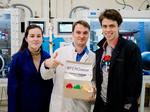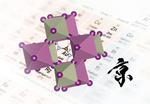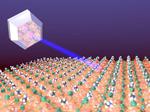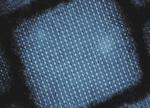Other

“Adding oxygen atoms to a perovskite-like crystal material splits it into layers, giving it unique electrical properties. Sheets of electrons that are highly mobile in only two dimensions, known as 2D electron gas, have unique properties that can be leveraged …

“Young scientists from ITMO University have developed a new type of nanoscale light sources based on halide perovskites. The nanosources are subwavelength nanoparticles which serve both as emitters and nanoantennas capable of amplifying light emission inherently without need for additional …

“A Purdue University professor and a multi-institution team of researchers recently published a paper on solar cells in Nature Materials. Letian Dou, an assistant professor in the Davidson School of Chemical Engineering, worked on the article, “Thermochromic halide perovskite solar …

“Researchers at Aalto University have found that only a fraction of stability tests done on new types of solar cells meet proper requirements. Tests lack common standards and should have been done in real-world conditions and in groups of several …

“Perovskite solar cells are an alternative to conventional silicon solar cells, poised to enter the market with their high power-conversion efficiencies (above 22% now) and lower capital expenditure and manufacturing costs. One of the main methods for depositing perovskite films …

“RIKEN’s K computer simulated more than 11,000 compounds to find promising materials for a new type of solar cell Using one of the world’s most powerful supercomputers, RIKEN researchers have identified a material that could boost the …

“Researchers at the U.S. Naval Research Laboratory (NRL) Center for Computational Materials Science, working with an international team of physicists, have revealed that nanocrystals made of cesium lead halide perovskites (CsPbX3), is the first discovered material which the ground …

“The nominal cell operating life of perovskite solar cells is strongly influenced by their inner architecture.This was shown by two scientists at the Helmholtz-Zentrum Berlin and the Technical University of Munich. They combined experiments with numerical simulations in order …

“Photons with energy higher than the ‘band gap’ of the semiconductor absorbing them give rise to what are known as hot electrons. The extra energy in respect to the band gap is lost very fast, as it is converted into …

“A type of quantum dot that has been intensively studied in recent years can reproduce light in every colour and is very bright. An international research team that includes scientists from ETH Zurich has now discovered why this is the …
